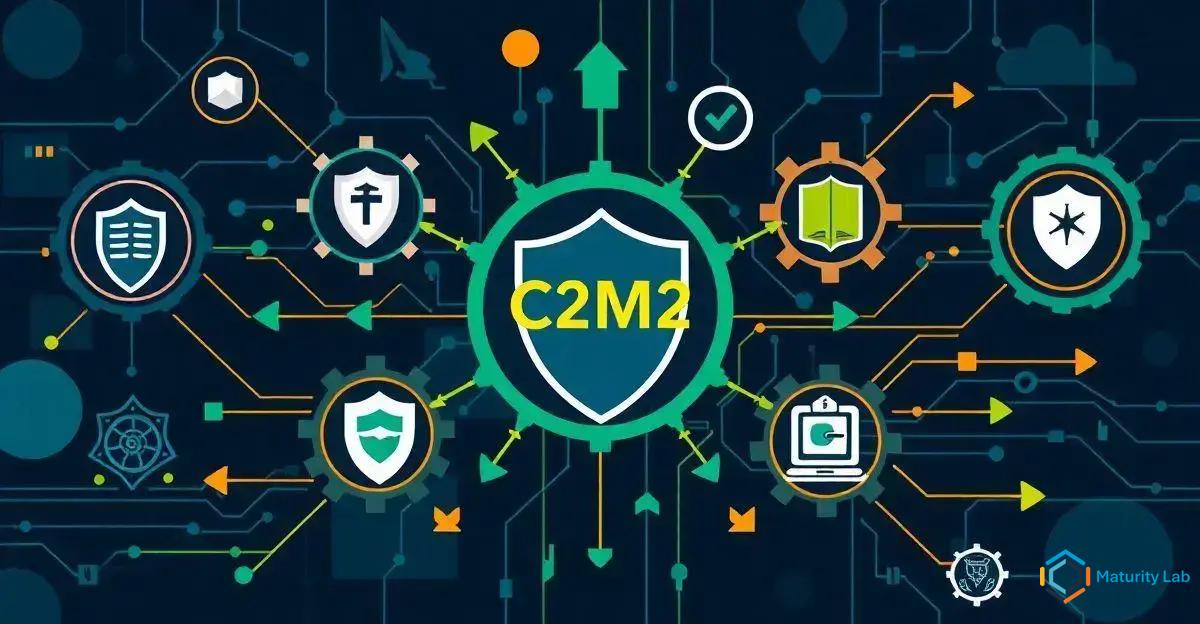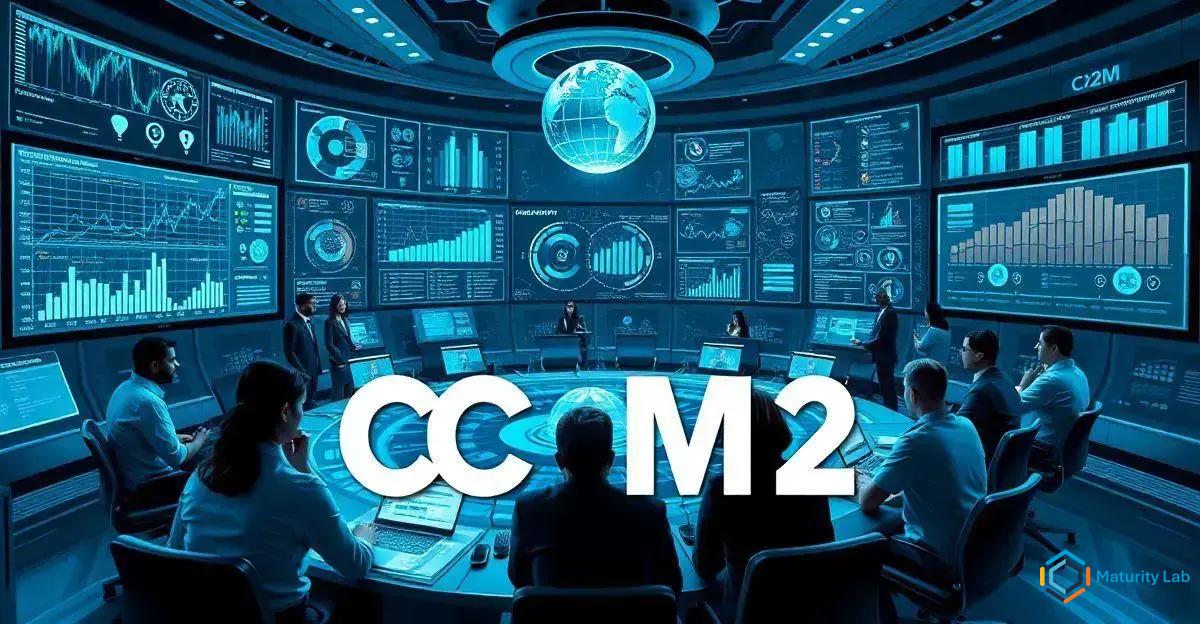The Cybersecurity Capability Maturity Model (C2M2) is a framework that assists organizations in improving their cybersecurity practices through structured risk management and threat mitigation. By utilizing C2M2, organizations can evaluate their cybersecurity strengths and weaknesses, implement tailored strategies for improvement, and foster a culture of security awareness, ultimately enhancing their overall cybersecurity maturity and resilience.
In today’s rapidly evolving digital landscape, the need for robust risk management and threat mitigation strategies has never been more critical. The Cybersecurity Capability Maturity Model (C2M2) offers a comprehensive framework designed to enhance an organization’s cybersecurity posture. By understanding and implementing C2M2, businesses can effectively manage risks and mitigate threats, ensuring a secure and resilient operational environment. This article delves into the intricacies of the C2M2 framework and explores practical strategies for threat mitigation.
Understanding the C2M2 Framework

The Cybersecurity Capability Maturity Model (C2M2) is a robust framework designed to help organizations assess and improve their cybersecurity capabilities.
Developed by the U.S. Department of Energy, C2M2 provides a structured approach to evaluating an organization’s cybersecurity posture, identifying areas for improvement, and implementing best practices to enhance overall security.
C2M2 is organized into ten domains, each representing a critical aspect of cybersecurity. These domains include Asset, Change, and Configuration Management; Threat and Vulnerability Management; and Situational Awareness, among others. Each domain is further divided into maturity indicator levels, ranging from Initial to Optimized, allowing organizations to gauge their current maturity level and set goals for progression.
One of the key strengths of the C2M2 framework is its flexibility. It can be tailored to suit organizations of various sizes and industries, making it a versatile tool for enhancing cybersecurity. By conducting a thorough assessment using C2M2, organizations can identify specific weaknesses in their cybersecurity posture and develop targeted strategies to address them.
The framework also emphasizes the importance of continuous improvement. Cyber threats are constantly evolving, and organizations must regularly reassess their cybersecurity capabilities to stay ahead of potential risks. C2M2 encourages a proactive approach to cybersecurity, promoting regular reviews and updates to ensure that security measures remain effective and up-to-date.
In addition to providing a roadmap for improving cybersecurity capabilities, C2M2 also facilitates communication and collaboration within the organization. By using a common framework and language, different departments and stakeholders can work together more effectively to address cybersecurity challenges. This collaborative approach helps to ensure that cybersecurity is integrated into all aspects of the organization’s operations, rather than being siloed within the IT department.
To illustrate the practical application of C2M2, consider a mid-sized manufacturing company that has recently experienced a data breach. By conducting a C2M2 assessment, the company can identify the root causes of the breach, such as inadequate asset management or insufficient threat monitoring. Based on these findings, the company can develop and implement targeted strategies to address these weaknesses, such as improving asset tracking processes or enhancing threat detection capabilities. Over time, by continuously reassessing and refining their cybersecurity measures, the company can achieve a higher maturity level and significantly reduce the risk of future breaches.
In summary, the C2M2 framework offers a comprehensive and flexible approach to enhancing cybersecurity capabilities. By understanding and implementing C2M2, organizations can effectively manage risks, mitigate threats, and ensure a secure and resilient operational environment.
Implementing Threat Mitigation Strategies Using C2M2

Implementing threat mitigation strategies using the Cybersecurity Capability Maturity Model (C2M2) involves a systematic approach to identifying, assessing, and addressing potential threats to an organization’s cybersecurity. The C2M2 framework provides a structured methodology that organizations can follow to enhance their threat mitigation capabilities and ensure a robust security posture.
The first step in implementing threat mitigation strategies using C2M2 is to conduct a comprehensive threat assessment. This involves identifying potential threats that could impact the organization, such as cyber-attacks, data breaches, or insider threats. By leveraging the Threat and Vulnerability Management domain of C2M2, organizations can systematically identify and prioritize threats based on their potential impact and likelihood of occurrence.
Once potential threats have been identified, the next step is to assess the organization’s current capabilities to mitigate these threats. This involves evaluating existing security measures, such as firewalls, intrusion detection systems, and access controls, to determine their effectiveness in addressing identified threats. The C2M2 framework provides maturity indicator levels that organizations can use to gauge their current capabilities and identify areas for improvement.
Based on the assessment, organizations can develop and implement targeted threat mitigation strategies. These strategies may include enhancing existing security measures, such as upgrading firewalls or implementing advanced threat detection technologies, as well as adopting new practices, such as regular security training for employees or establishing incident response protocols. The C2M2 framework emphasizes the importance of a proactive approach to threat mitigation, encouraging organizations to continuously monitor and update their security measures to stay ahead of evolving threats.
In addition to technical measures, C2M2 also highlights the importance of organizational practices in threat mitigation. This includes establishing clear policies and procedures for cybersecurity, promoting a culture of security awareness, and ensuring that all employees understand their roles and responsibilities in maintaining cybersecurity. By fostering a security-conscious organizational culture, organizations can significantly enhance their ability to mitigate threats.
To illustrate the practical application of these strategies, consider a financial services firm that is concerned about the increasing threat of phishing attacks. By conducting a C2M2 assessment, the firm identifies that its current email filtering systems are inadequate and that employees lack awareness of phishing tactics. Based on these findings, the firm implements a multi-faceted threat mitigation strategy that includes upgrading its email filtering technology, conducting regular phishing awareness training for employees, and establishing clear procedures for reporting suspicious emails. Over time, these measures help to reduce the firm’s vulnerability to phishing attacks and enhance its overall cybersecurity posture.
In conclusion, implementing threat mitigation strategies using the C2M2 framework involves a comprehensive and proactive approach to identifying, assessing, and addressing potential threats. By leveraging the structured methodology provided by C2M2, organizations can enhance their threat mitigation capabilities, ensuring a secure and resilient operational environment.
In summary, the Cybersecurity Capability Maturity Model (C2M2) serves as a vital tool for organizations aiming to bolster their cybersecurity posture through effective risk management and threat mitigation strategies.
By understanding the comprehensive structure of the C2M2 framework, organizations can systematically assess their current cybersecurity capabilities, identify areas for improvement, and implement targeted strategies to address specific vulnerabilities.
The flexibility of C2M2 allows it to be tailored to various organizational contexts, making it a versatile and valuable asset in the ever-evolving landscape of cybersecurity.
Implementing Threat Mitigation Strategies
Implementing threat mitigation strategies using C2M2 involves a proactive and continuous approach, ensuring that organizations remain vigilant and adaptive to emerging threats.
By conducting thorough threat assessments, evaluating existing security measures, and fostering a culture of security awareness, organizations can significantly enhance their ability to mitigate threats and manage risks effectively.
The collaborative nature of the C2M2 framework also facilitates better communication and coordination within the organization, ensuring that cybersecurity is integrated into all aspects of operations.
Ultimately, the adoption of the C2M2 framework empowers organizations to achieve higher maturity levels in their cybersecurity practices, leading to a more secure and resilient operational environment.
As cyber threats continue to evolve, the importance of a structured and proactive approach to cybersecurity cannot be overstated.
By leveraging the insights and methodologies provided by C2M2, organizations can navigate the complexities of cybersecurity with confidence and ensure the protection of their critical assets and information.
Frequently Asked Questions about C2M2, Risk Management, and Threat Mitigation
What is the Cybersecurity Capability Maturity Model (C2M2)?
The Cybersecurity Capability Maturity Model (C2M2) is a framework developed by the U.S. Department of Energy to help organizations assess and improve their cybersecurity capabilities. It provides a structured approach to evaluating cybersecurity posture, identifying areas for improvement, and implementing best practices.
How does C2M2 help in risk management?
C2M2 aids in risk management by offering a comprehensive framework to assess an organization’s cybersecurity capabilities. By identifying and addressing specific vulnerabilities, organizations can effectively manage risks and enhance their overall security posture.
What are the key domains of the C2M2 framework?
The C2M2 framework is organized into ten domains, including Asset, Change, and Configuration Management; Threat and Vulnerability Management; and Situational Awareness. Each domain represents a critical aspect of cybersecurity and is divided into maturity indicator levels.
How can organizations implement threat mitigation strategies using C2M2?
Organizations can implement threat mitigation strategies using C2M2 by conducting comprehensive threat assessments, evaluating existing security measures, and developing targeted strategies to address identified vulnerabilities. This includes enhancing technical measures and fostering a culture of security awareness.
Can C2M2 be tailored to different organizational contexts?
Yes, the C2M2 framework is highly flexible and can be tailored to suit organizations of various sizes and industries. This versatility makes it a valuable tool for enhancing cybersecurity across different organizational contexts.
Why is continuous improvement important in the C2M2 framework?
Continuous improvement is crucial in the C2M2 framework because cyber threats are constantly evolving. Regular reassessment and updates to security measures ensure that organizations remain proactive and adaptive, maintaining an effective and up-to-date cybersecurity posture.

